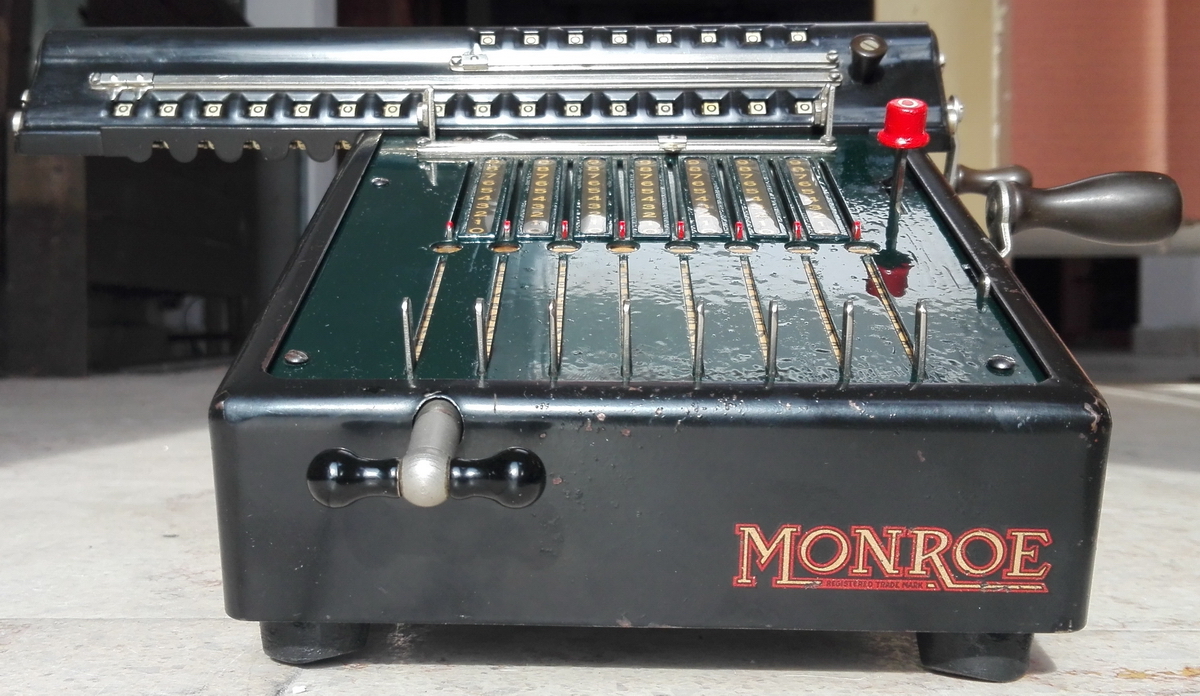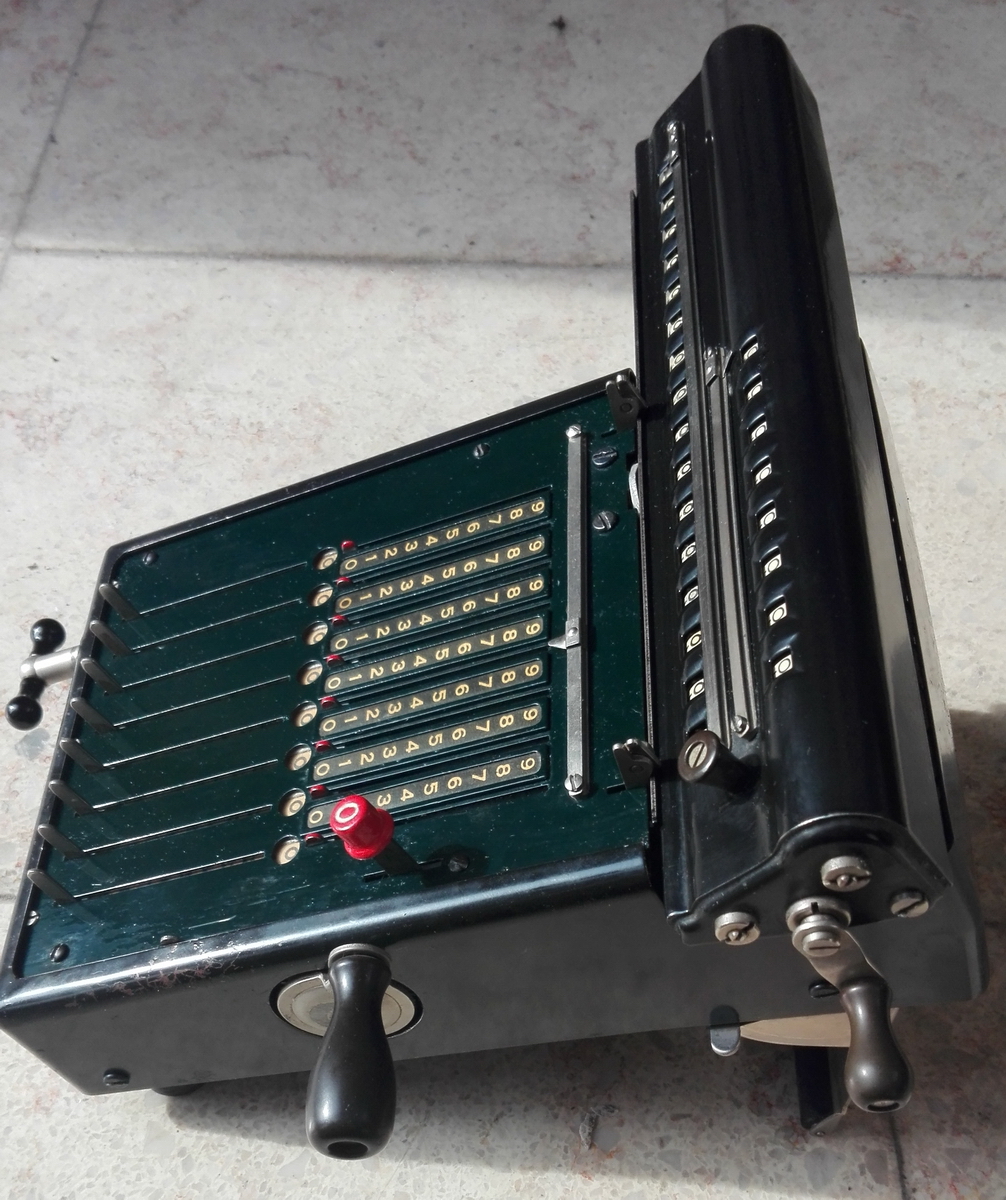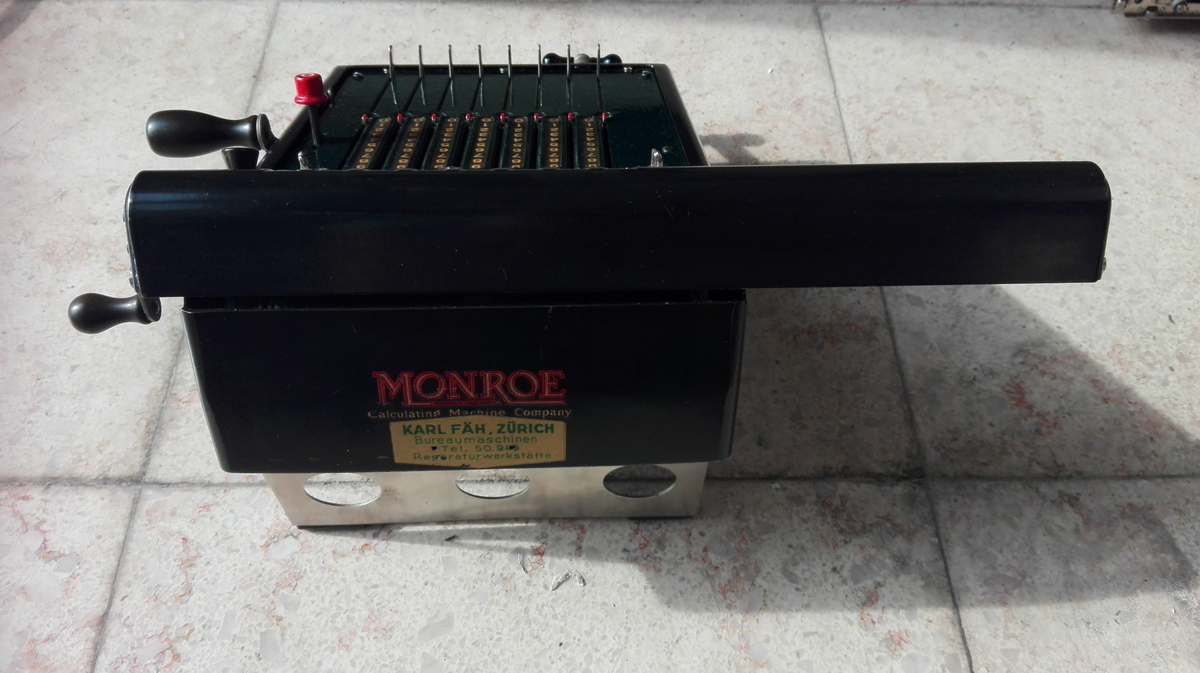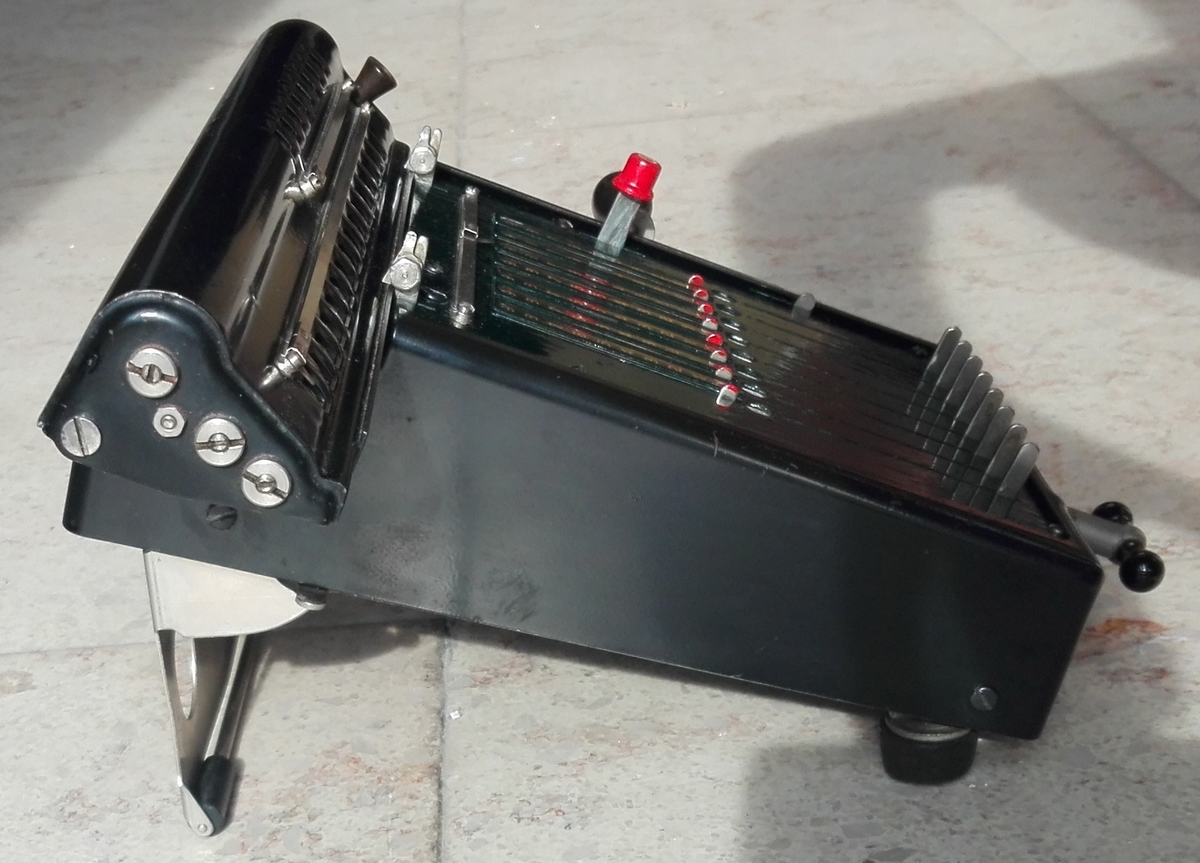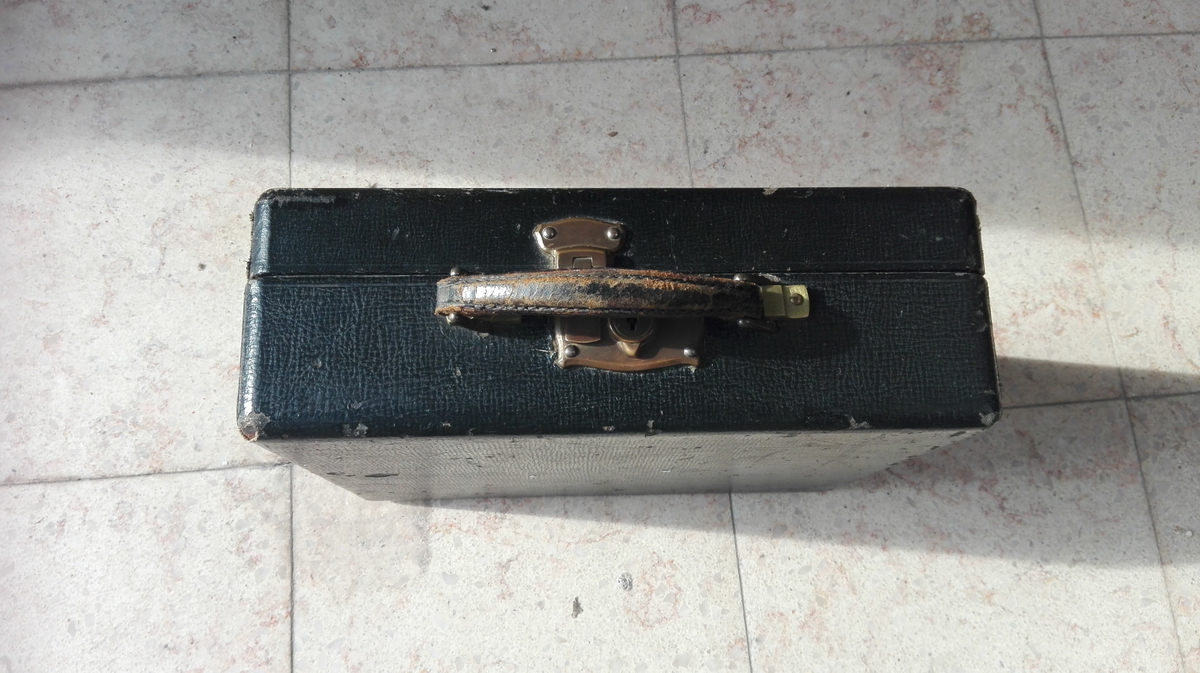Monroe SS160
Possibly the most interesting Monroe I have - it is extremely rare, and it is also easy to see why - just as it is easy to see why Monroe would have been interested in developing it. Firstly, I'll show a picture:
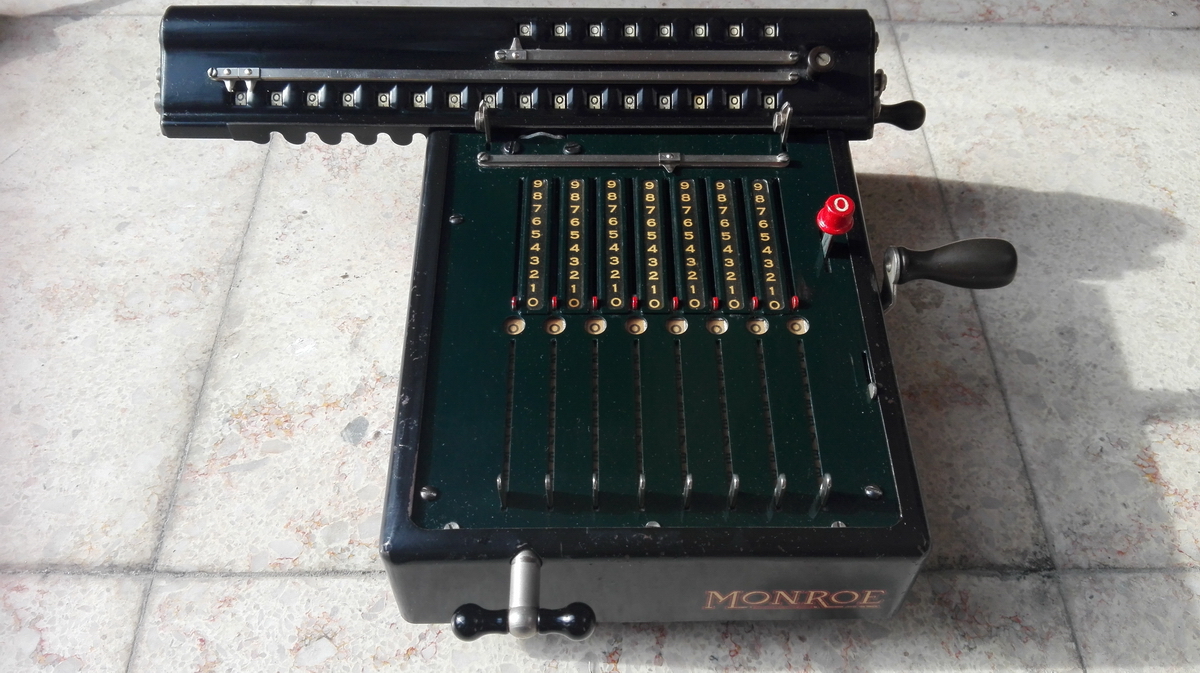
The machine is based on this patent by Edwin F. Britten Jr., from 1934. It is being pitched as an "improved setting mechanism", but what Monroe really wanted was a cheaper setting mechanism. The very first Monroe had keys from the very start, and the expense in parts and labour associated with the keyboard setting mechanism probably spurred on the development of this abomination - a regular Monroe L, with the setting mechanism taken out and replaced by sliders. The pictures below show why it would have been attractive to pursue - this is a regular L- the keyboard alone probably contains as many parts as the rest of the machine body together.
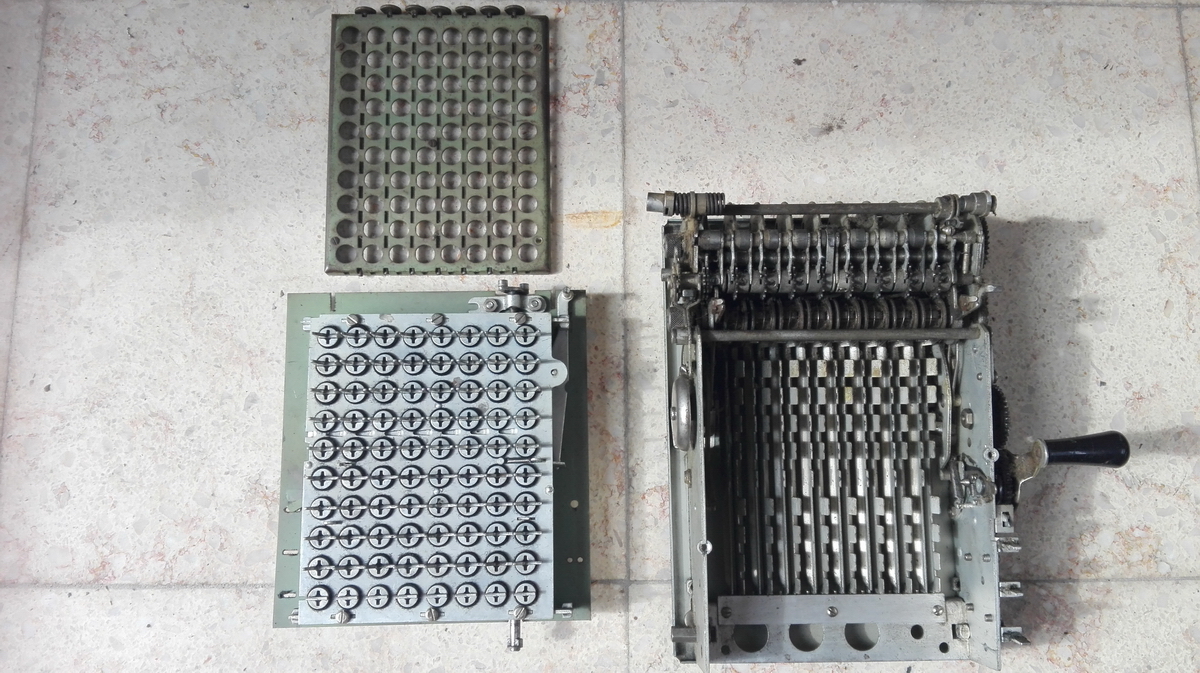
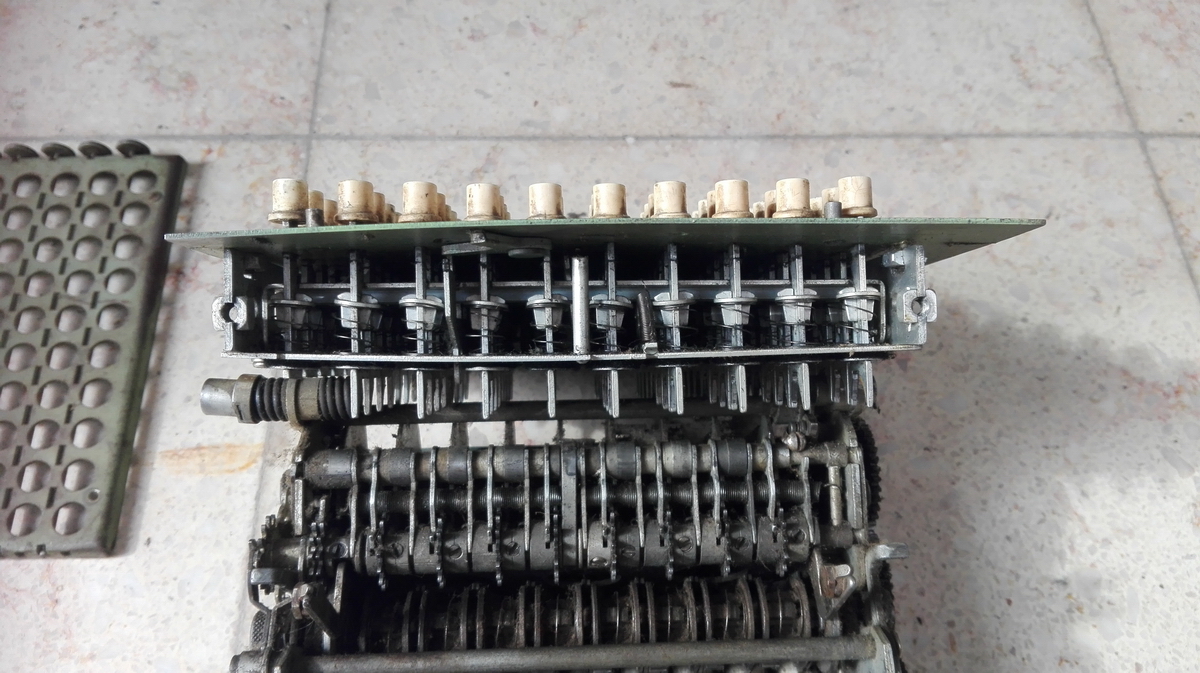
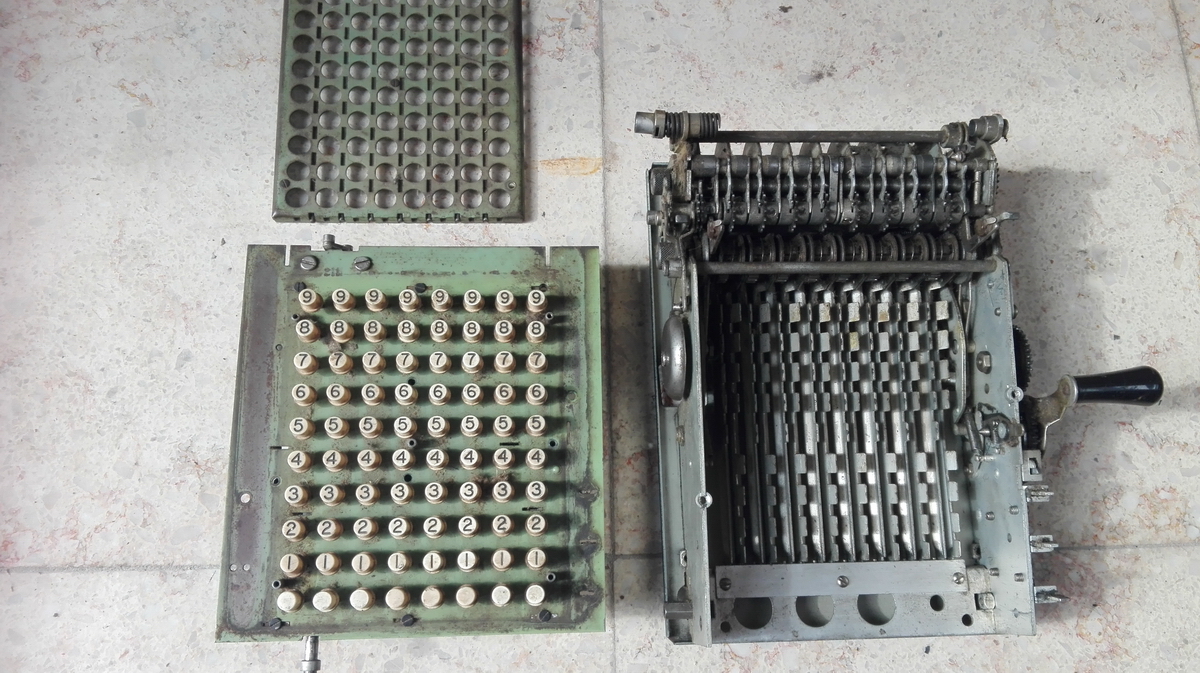
This, on the other hand, is the slider machine. The number of parts is about ten times lower, and thus it is also ten times cheaper to make and assemble.
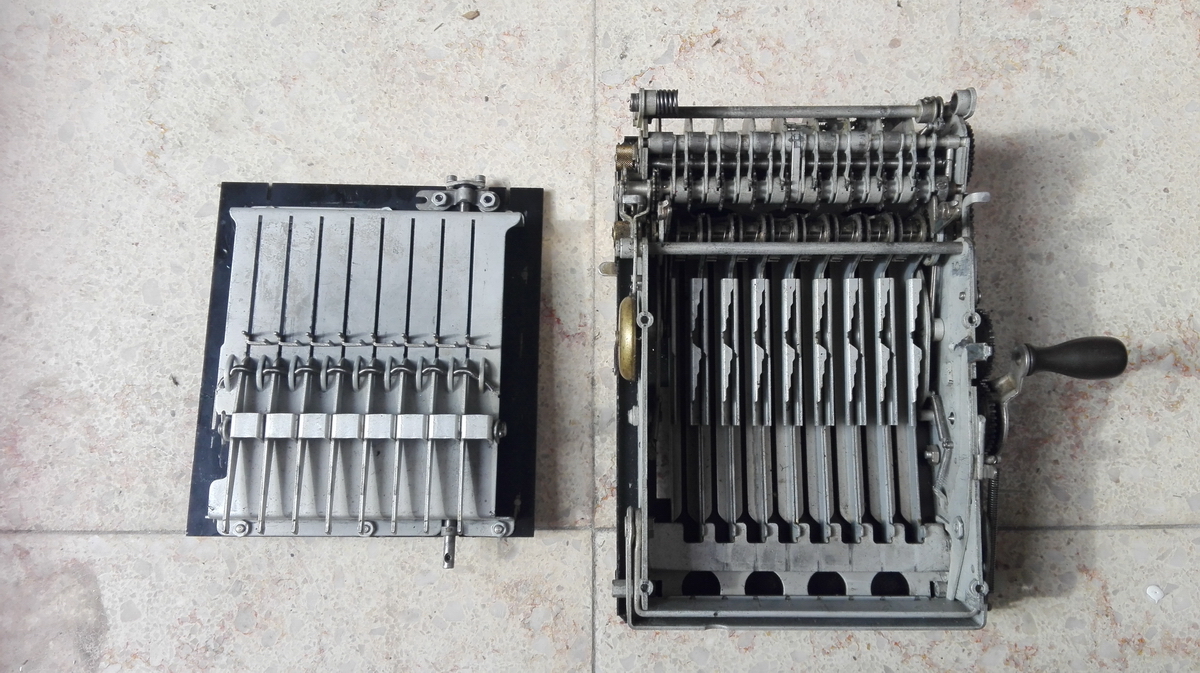
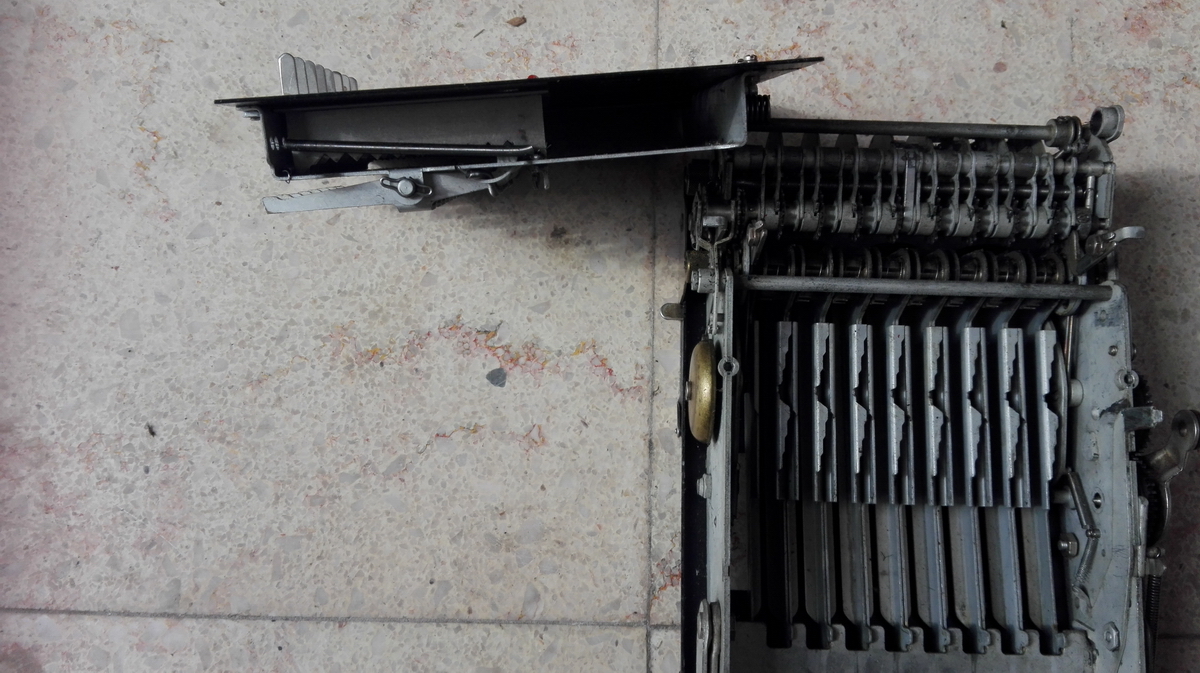
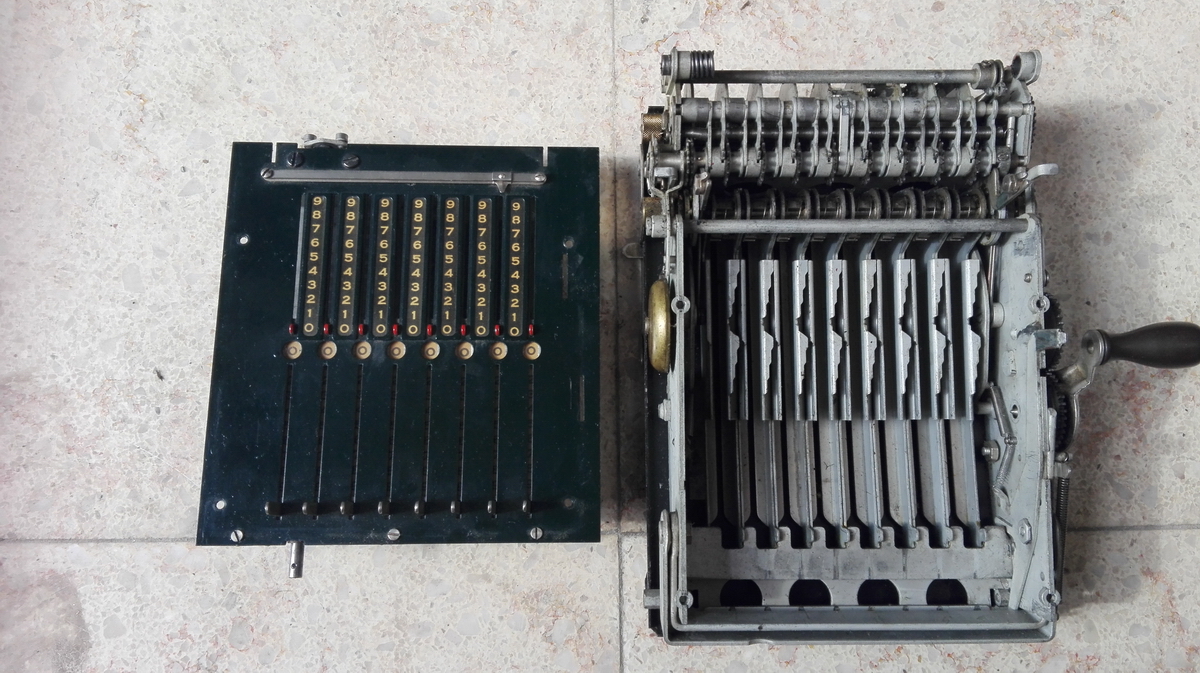
There are some changes to the interaction of the tilting bars to the setting mechanism, but the basic principle is the same - while a two-toothed fork is provided for every key in the keyboard, in the slider mechanism there is only one fork, which is shifted up and down the stepped bars to tilt them into engagement with the calculating gear.
This is how calculating with a Monroe machine works - it has divided (i.e. "biquinary") stepped drums, that rotate over an axle perpendicular to the machine. The gear they engage is in the middle, and the bars with 5 and one steps are tilted to shift the stepped drum parts into engagement with the counting gear - which then engages the carriage directly. These are four pictures of how it operates - first one is the neutral position:
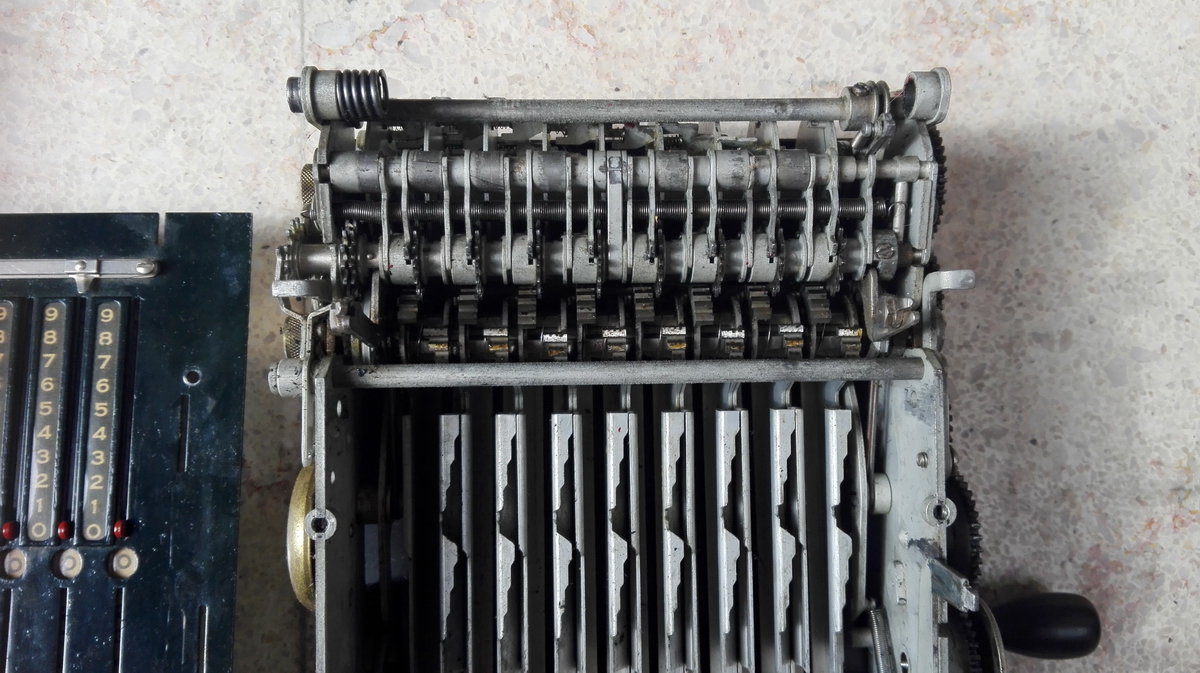
next image shows the "5" part of the stepped drum shifted right:
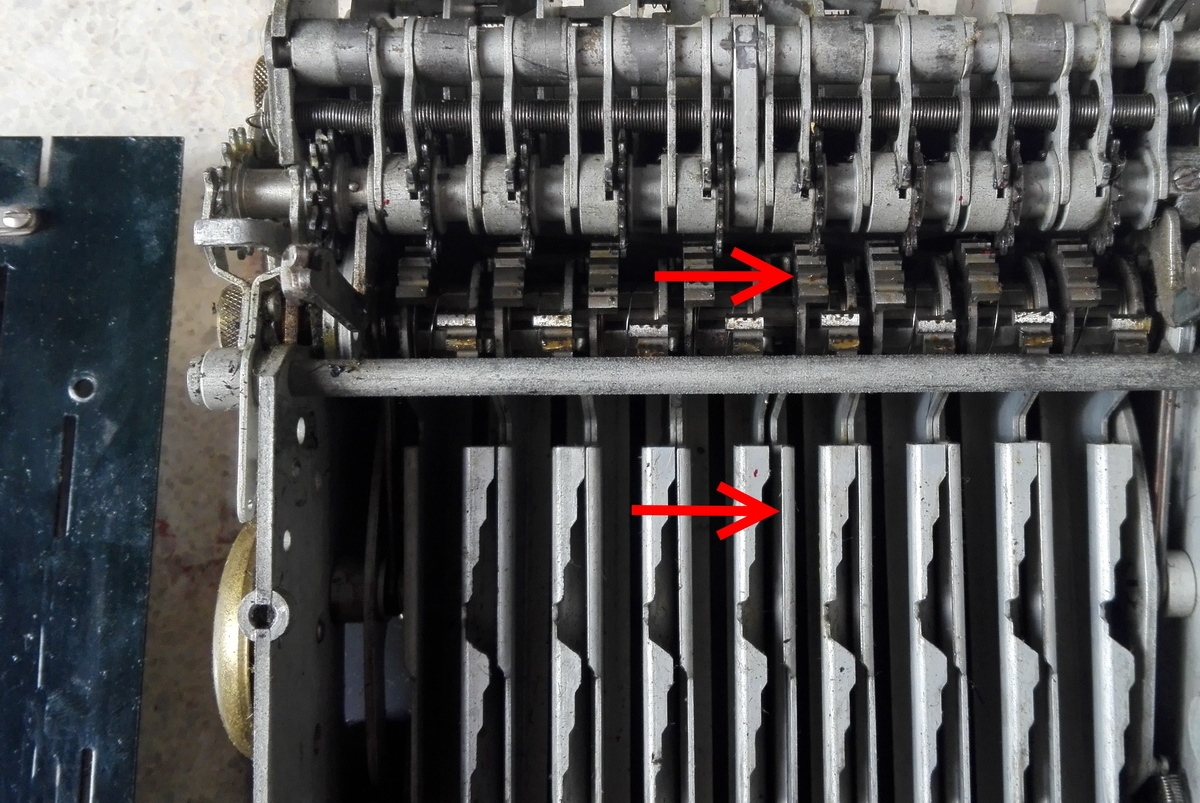
Then the stepped part of the stepped drum shifted left, into engagement:
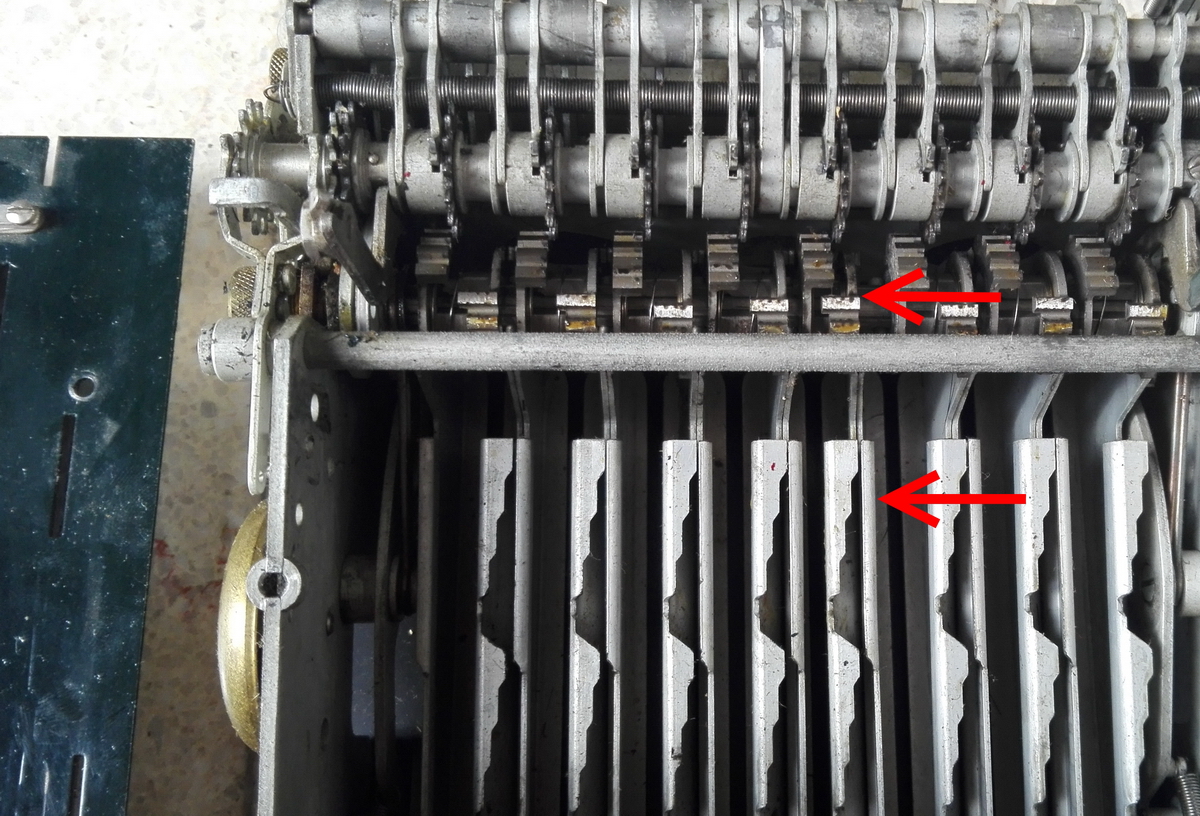
And finally both at the same time:
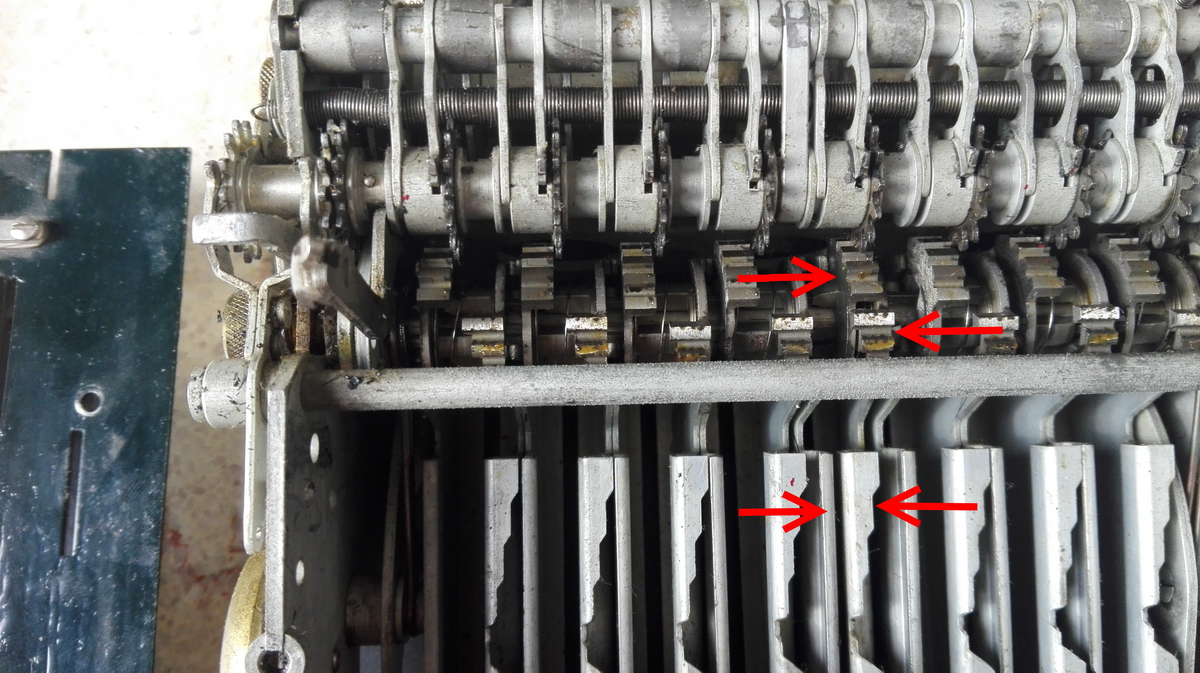
This new keyboard fitted into the existing housing of the Monroe L, but it could have been made only half as high, and the awkward setting vs. indicating conundrum could have been done away with. Now the approach is very much belt and braces - the number set is indicated by a round window under which a numeral indicator strip moves, as well as by the top pins moving along a strip of numbers - probably to give the operator something to look at in the upper part of the setting range.
These is an American advertisement for this machine in the rechnerlexikon, but this particular machine was sold in Switzerland.
There are so many issues with this setting mechanism that it is hard to understand what moved Monroe to try and take it into production. First of all, the setting is very sensitive - it is almost impossible to end up selecting the correct number by touch - you really need to check and double check the number in the window, and you will frequently overshoot and have to correct, which is fiddly and takes time.
Then there is the zeroing mechanism - which almost works, but not quite. Due to the sliding surfaces that are present, the springs that are supposed to take the sliders back to zero work most of the time, but not always - there are a few problematic rows that stick when the zero button is pushed, which then requires repeated tapping of the zero button, or manual sliding back to zero of the offending columns - even with the machine well-oiled and squeaky clean.
But that is not all ... the setting pins are very thin, and would quickly start hurting the fingers of the operator - I do not understand why they did not add keytops to them to make them more user-friendly. That being said, they are also long, and stick up quite high - it is very easy to catch one with a sleeve or your hand when moving about the setting mechanism, and this will mess up the number set.
Apparently Britten himself found out this could and would happen, not just when setting a number, but also during a calculation, and not just with the sliders, but also the zero button is precariously close to the main crank, and if hit accidentally during multiplication, this messes up everything in a non-recoverable manner. So as kind of afterthought, a tiny selection pin was added to lock the setting register for the course of an operation - very user-unfriendly, and a royal pain.
Finally, with the touchy zero-setting button (which is a repainted regular Monroe keyboard key, presumably because putting the usual larger zeroing key in that position would lead to even more frequent accidents), Monroe missed the opportunity for automatic zero-setting during series of additions, which is simply not provided on this machine.
With all these disadvantages, it is no big wonder that any customer that had the opportunity to try Monroe machines would go for the keyboard one, even if the slider one would have been sold at half the price. I know I would. It is just not worth the hassle in time, effort and aggravation to try and deal with this setting system. A classic case of "it sounded like a good idea at the time".
The serial number of the machine is engraved on the inner left backside of the carriage cover, where it is normally hidden by the carriage slide bar. For this machine it is 194344, and the machine was assembled by a certain Mr. Lerch or Lerck.
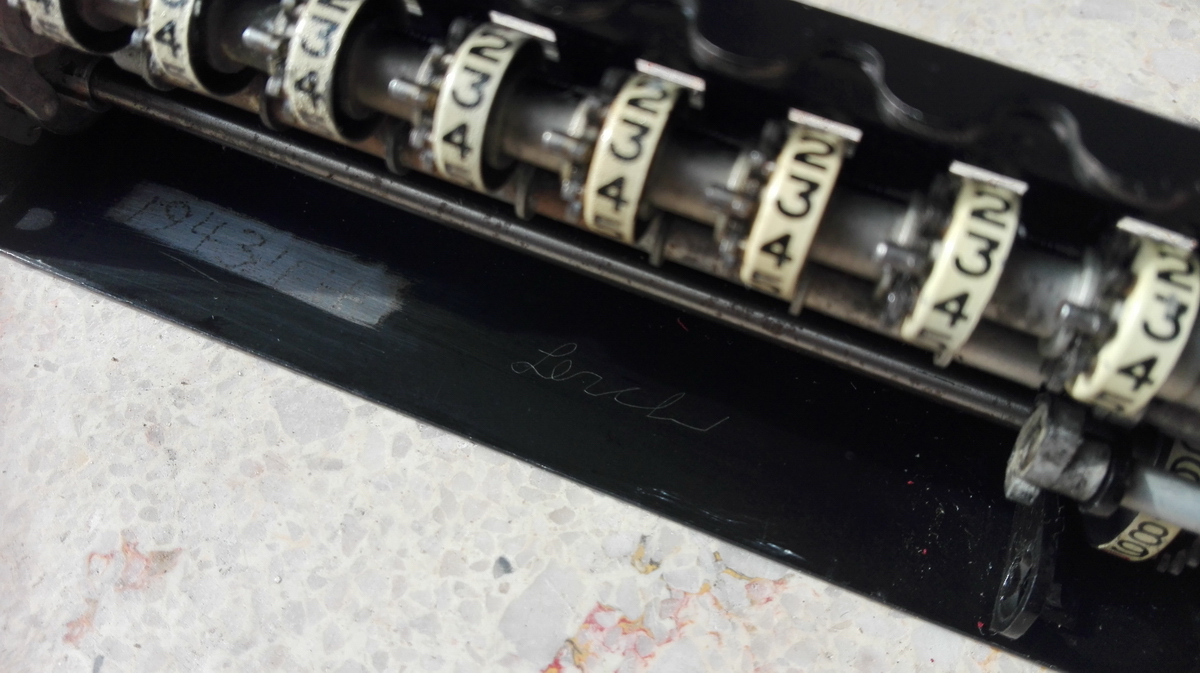
This machine also allowed me to find out what the rectangular hole at the bottom of a Monroe is for - it came with its own special carrying case and locking mechanism for securely putting the machine in it without touching the sides.
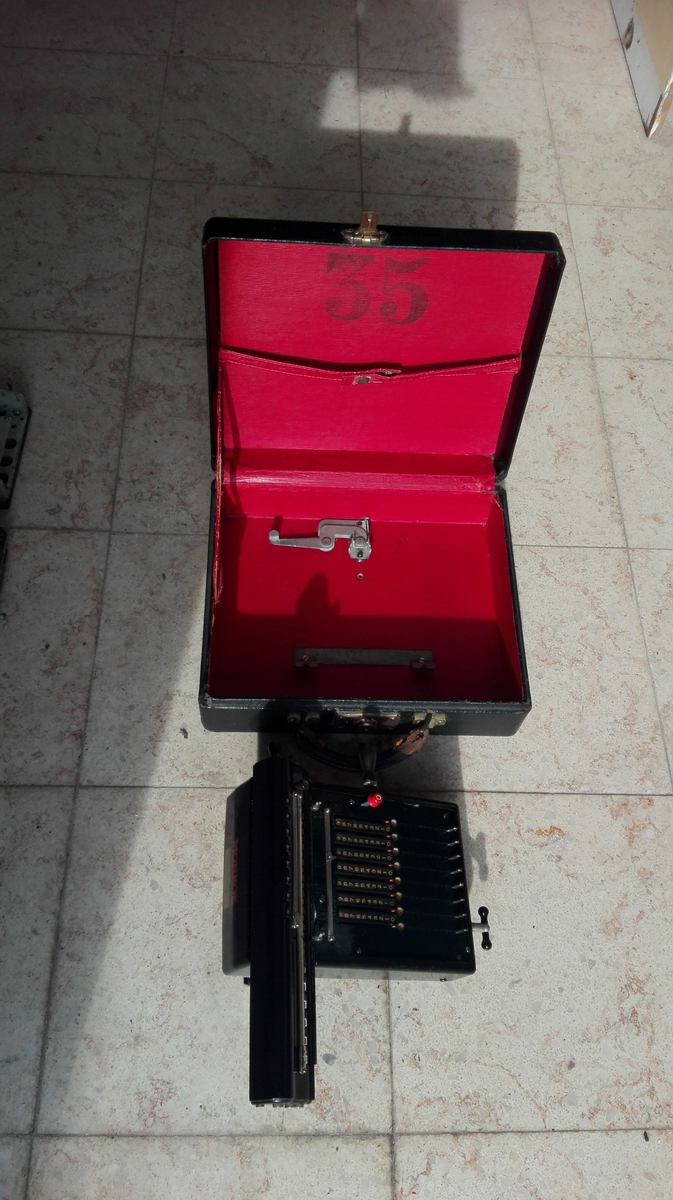
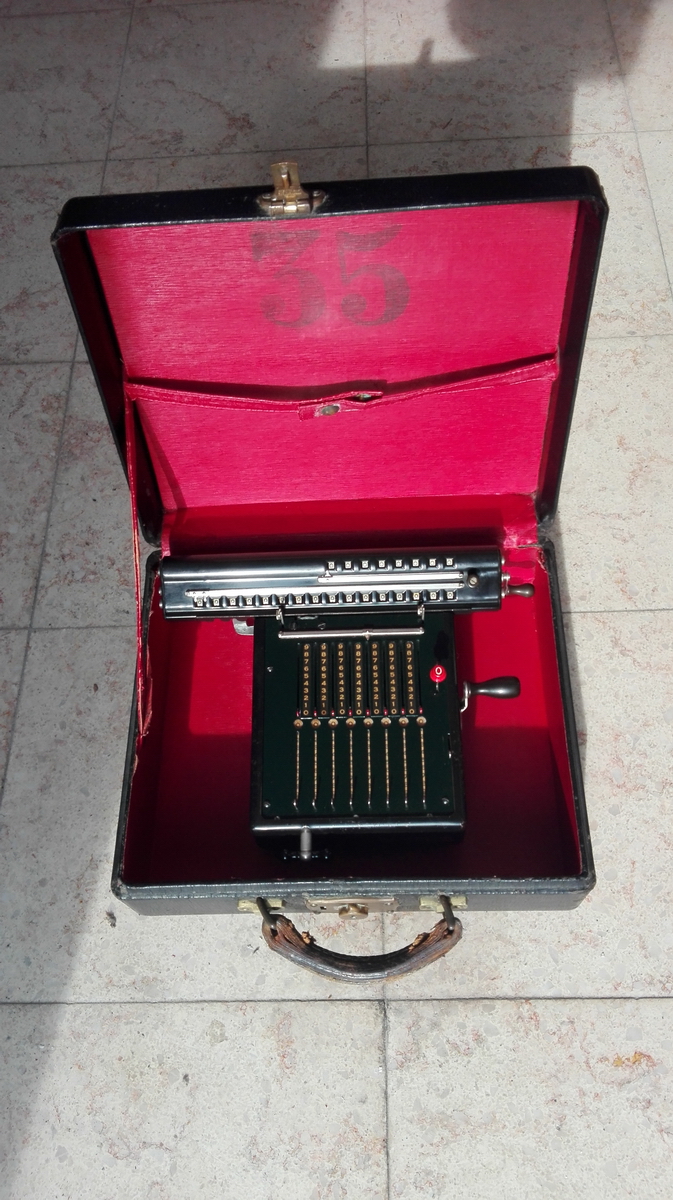
Now for some pictures:
